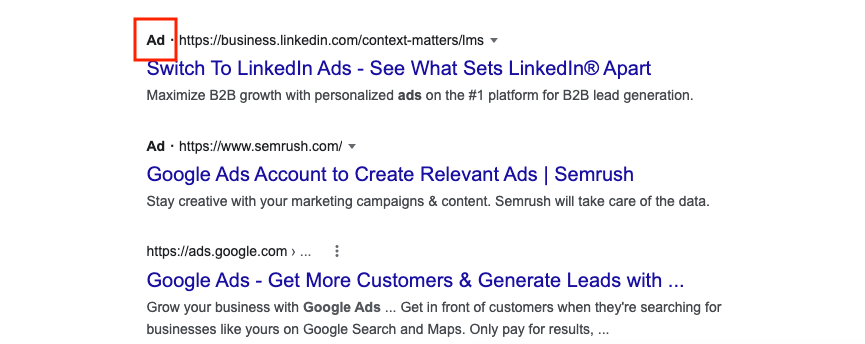It can be a challenge to know the best way to drive traffic to your company’s website. Two popular methods are search engine optimisation (SEO) and pay-per-click (PPC). While SEO and PPC share the same goal of driving traffic to a website, they differ in the way they achieve that goal. In this article about the basics of PPC advertising for beginners, we are going to explain the differences between SEO and PPC and focus on the benefits that using PPC can bring to your business. We will also provide an overview of what PPC is and how it can help your business attract more customers and generate more leads.
Whether you’re new to digital marketing or looking to improve your online advertising strategy, we hope that you’ll find this article useful and learn how PPC can benefit your business. Pay-per-click (PPC) advertising has become one of the most popular forms of digital marketing in recent years, and for good reason. PPC advertising allows businesses to target specific audiences, generate more leads and increase conversions.
What is PPC advertising?
But what exactly is PPC advertising? PPC advertising, short for pay-per-click advertising, is a form of online advertising where advertisers pay every time a user clicks on one of their ads. These ads typically appear on search engine result pages (SERPs), social media platforms and other websites. You might have seen those ads on Google when you search for something.

Benefits of PPC Advertising for Businesses
The benefits of PPC advertising for businesses are numerous. First of all, it provides a way to get in front of potential customers who are already searching for products or services like yours. Unlike traditional advertising, which may be seen by a broad audience, PPC ads are shown only to those who are actively searching for relevant keywords or phrases. This makes the targeting more precise and the leads more qualified.
PPC advertising is also highly measurable, which means you can track your results and see exactly how your campaigns are performing. With tools like Google Ads and Facebook Ads, you can monitor the number of clicks, impressions, and conversions your ads are generating. This allows you to optimise your campaigns and adjust your strategies accordingly.
PPC vs. SEO
You may be wondering: what’s the difference between PPC advertising and search engine optimisation (SEO)? While both are aimed at improving a website’s visibility in search engine results, the key difference lies in the approach.
With SEO, the goal is to optimise a website’s content, structure, and navigation in order to rank higher in organic search results. This takes time and requires ongoing efforts to maintain rankings. On the other hand, PPC advertising allows businesses to quickly get to the top of search results by paying for ads.
Pros and Cons of PPC Advertising and SEO
Of course, there are pros and cons to both PPC advertising and SEO. SEO can be a more cost-effective option in the long run, but it requires a lot of time and effort to achieve results. PPC advertising can provide immediate results, but can be more expensive and requires ongoing management.
So where do the opportunities lie in PPC advertising? The truth is, they are endless. With so many advertising platforms and targeting options available, businesses can reach specific audiences in creative ways. From targeting based on location, interests, demographics, and behaviours, the possibilities are endless.
Real-life Examples of Successful PPC Strategies
Our client, a property law firm with over 30 years’ experience, was struggling to generate leads and attract new clients through their website. Although they had a good reputation in their local community, they were finding it difficult to stand out from their competitors on the internet.
To help them improve their online presence and attract more leads, we recommended a comprehensive PPC advertising strategy. We created highly targeted ad campaigns, optimised for their target audience, and conducted extensive keyword research to identify the most relevant and effective keywords for their business.
Our team also implemented ad extensions such as call extensions and location extensions to make it easier for potential customers to contact the company and find their offices. We also provided detailed analytics and regular reporting to track the success of their campaigns and continually improve their strategy.
This client was able to generate more quality leads and increase conversions, resulting in a significant increase in revenue, thanks to our PPC services. They also gained a stronger online presence, remaining competitive in their local market.
Steps to set up a PPC advertising campaign
Setting up a PPC advertising campaign can seem quite a challenge, but with the right approach, it can be a highly effective way to reach potential customers and drive conversions.
Here are the key steps to follow when setting up a PPC advertising campaign:
- Define your goals and target audience: Before diving into the specifics of your campaign, it’s important to define your goals and target audience. What do you hope to achieve with your campaign? Who are you trying to reach? By clarifying these details, you can create a campaign that is tailored to your specific needs.
- Choose your advertising platform: There are several platforms to choose from when setting up a PPC campaign, including Google Ads, Bing Ads, and Facebook Ads. Each platform has its own strengths and weaknesses, so consider which one is best suited for your business and target audience.
- Create ad groups: Within your PPC campaign, you’ll need to create ad groups that are focused on specific themes or products. This helps to ensure that your ads are highly relevant to the user’s search query, which can improve your click-through rates and conversions.
- Choose your keywords: Keywords are the search terms that trigger your ads to appear in search engine results. It’s important to choose keywords that are highly relevant to your ad groups and target audience. Consider using a mix of broad, phrase, and exact-match keywords to maximise your reach and ensure your ads are seen by the right people.
- Write your ad copy: Your ad copy should be compelling, precise, and focused on the benefits of your product or service. Use clear and concise language, and include a strong call-to-action that encourages users to click on your ad and visit your website.
- Set your budget and bids: With PPC advertising, you only pay when someone clicks on your ad. You’ll need to set a budget for your campaign and bids for your keywords to ensure that your ads are being seen by the right people and are within your budget.
What are the different components of a PPC advertising campaign?
When it comes to setting up a pay-per-click (PPC) advertising campaign, there are several important components to consider. Each of these components plays a critical role in ensuring that your campaign is effective and generates the desired results. Let us explain the different components of a PPC campaign, including ad groups, keywords, and ad copy:
Ad Groups
Ad groups are a key component of any PPC campaign. An ad group is a collection of ads that share a common theme or topic. For example, if you run a digital marketing agency, you might have ad groups for “SEO Services,” “PPC Services,” and “Social Media Services.”
Creating ad groups allows you to target specific keywords and phrases with more precision. This helps to ensure that your ads are relevant to your target audience, which can lead to higher click-through rates (CTRs) and conversions.
Keywords
Keywords are the backbone of any successful PPC campaign. Keywords are the words and phrases that people use to search for products or services online. By selecting the right keywords, you can ensure that your ads are shown to the right people at the right time.
When selecting keywords for your campaign, it’s important to consider the intent behind each keyword. For example, someone who searches for a “digital marketing agency” may be looking for a service provider, while someone who searches for “digital marketing tips” may be looking for educational resources.
Ad Copy
Ad copy is the text that appears in your ads. This is the message that you want to convey to your target audience. Ad copy should be attention-grabbing, informative, and persuasive.
When writing ad copy, it’s important to highlight the benefits of your product or service. You should also include a clear call to action (CTA) that encourages users to take the desired action, such as “Buy Now” or “Get a Quote.”
Tips for Selecting the Right Keywords
Selecting the right keywords is critical to the success of your PPC campaign. Here are a few tips to help you select the right keywords:
- Conduct thorough keyword research: Use keyword research tools to identify relevant keywords and phrases that your target audience is searching for.
- Focus on long-tail keywords: Long-tail keywords are longer, more specific phrases that are less competitive and often have higher conversion rates.
- Consider intent: Focus on keywords that reflect the intent of your target audience. Are they looking for information, products, or services?
- Use negative keywords: Negative keywords are terms that you don’t want your ads to appear for. By using negative keywords, you can help to ensure that your ads are shown only to the most relevant audience.
- Use keyword research tools: Tools like Google’s Keyword Planner and Moz’s Keyword Explorer can help you identify relevant and high-traffic keywords for your campaign.
- Consider user intent: When selecting keywords, consider what the user is searching for and the intent behind their search. Choose keywords that match their intent and are relevant to their search query.
- Keep an eye on your competitors: Look at the keywords your competitors are using in their campaigns and consider whether they could be effective for your business as well.
If you’re running a pay-per-click (PPC) advertising campaign, you want to ensure that you’re getting the best possible return on investment. To do that, it’s important to optimise your campaigns for better performance.
Here are some tips to help you do just that:
- Conduct regular keyword research: As search habits change, it’s important to stay on top of what your target audience is searching for. By conducting regular keyword research, you can identify new keywords to target, and ensure that your campaigns remain relevant.
- Refine your targeting: Ensure that your campaigns are targeting the right audience. You can do this by using demographic targeting, location targeting, and other targeting options offered by the advertising platform.
- Improve ad copy: Ensure that your ad copy is engaging and encourages users to click on your ad. You can experiment with different messaging and calls to action to find out what works best.
- Optimise landing pages: Ensure that the landing page your ads lead to is relevant and optimized for conversions. This includes having clear calls to action, relevant content, and a user-friendly design.
- Monitor and adjust bids: Keep a close eye on your bids and adjust them as needed. You can increase bids for keywords that are generating a lot of clicks and conversions, and decrease bids for keywords that are not performing as well.
- Use negative keywords: Negative keywords are keywords that you don’t want your ads to show for. By using negative keywords, you can avoid wasting your advertising budget on irrelevant clicks.
- Monitor performance metrics: Use the performance metrics provided by the advertising platform to monitor the success of your campaigns. You can track clicks, impressions, click-through rates, and conversions to see how your campaigns are performing.
Don’t be afraid to experiment and try new strategies to find what works best for your business.
Recap:
We explored the basics of PPC advertising, including what it is, its benefits for businesses, and how it differs from SEO. We also looked at real-life examples of successful PPC strategies, and the key steps to follow when setting up a PPC advertising campaign, such as defining your goals and target audience, choosing your advertising platform, creating ad groups, choosing your keywords, and writing ad copy. We also explained the different components of a PPC campaign, including ad groups, keywords, and ad copy, and provided tips for selecting the right keywords and optimising your PPC campaigns for better performance.
Final Tips on PPC for Beginners:
If you’re a beginner looking to get started with PPC advertising, here are some tips to keep in mind:
- Define your goals and target audience before creating your campaign.
- Choose the advertising platform that is best suited for your business and target audience.
- Create ad groups that are focused on specific themes or products.
- Choose keywords that are highly relevant to your ad groups and target audience.
- Write compelling ad copy that highlights the benefits of your product or service and includes a clear call to action.
- Set your budget and bids to ensure that your ads are being seen by the right people and are within your budget.
PPC advertising can be a valuable tool for businesses looking to generate more leads and increase conversions. While it may seem daunting at first, don’t be afraid to start experimenting with PPC advertising to drive business growth. With the right approach, it can be a highly effective way to reach potential customers and achieve your business goals. If you need help getting started, our team is here to provide expert guidance and support.


